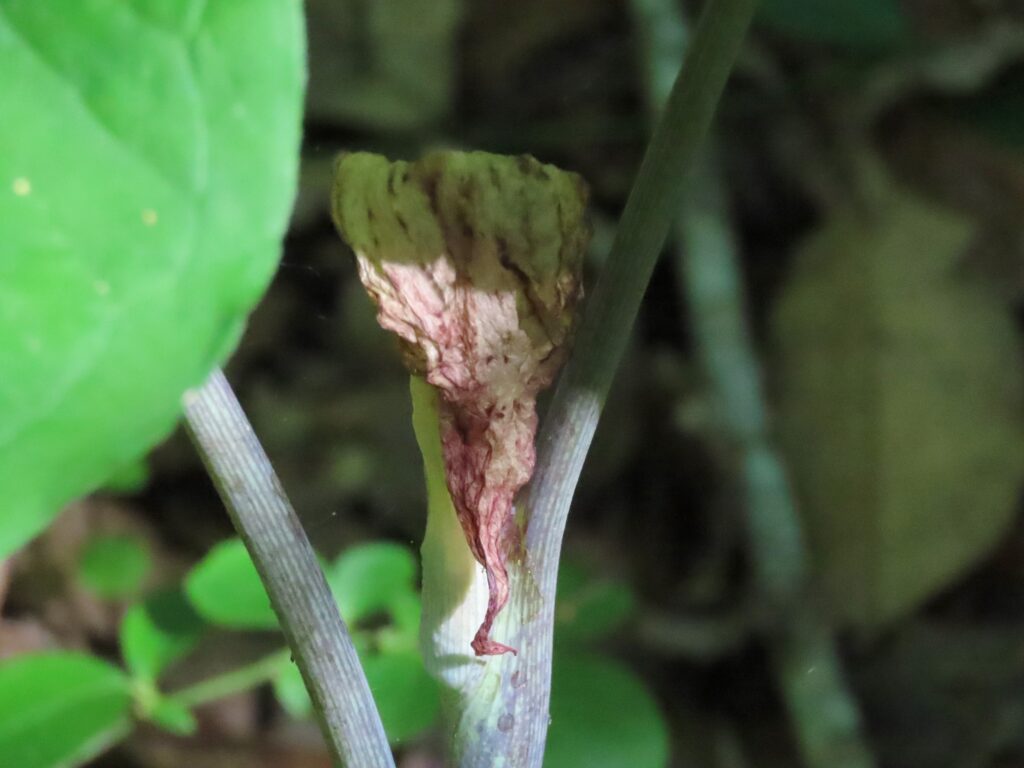




This week for Flora and Fauna Friday we have a widespread wildflower of wet woodlands, Jack-in-the-pulpit (Arisaema triphyllum).
Jack-in-the-pulpit is a perennial wildflower found throughout the Eastern United States, to include Edisto Island. It grows most commonly in shady woodlands with a sparse understory. There it crops up singly or in a small colony within depressions and damp spots in the soil with a high water table. Jack-in-the-pulpit is an easy plant to identify. It has large three-lobed leaves that emerge straight from the ground, generally in pairs, with each leaflet being angled roughly ninety degrees apart from one another and the whole leaf reaching a foot or two above the ground. Below these leaves emerges a unique flower for our uplands.
Jack-in-the-pulpit is a member of the Arum family, Araceae. Arums are best known for their large leaves and unique flowers. Arum flowers have two distinctly visible parts, an outer spathe and an inner spadix. The spadix is a spike that contains the real flowers, both male and female. The spathe is an outer covering that wraps around and protects the spadix and functions a bit like petals and sepals do on other flowers. It also acts as a funnel to channel pollinators down to the true flowers. In Jack-in-the-pulpit, the flower stands upon its own vertical stalk and is a pale green cup with longitudinal stripes. Those stripes are either a darker green or a deep burgundy. The spathe wraps the whole way around the spadix and curls down over the top to form a hood. From within the spathe the rounded tip of the spadix peeks out. This uniquely shaped flower is where the Jack-in-the-pulpit name comes from, as the bloom looks like a man (assumedly the fella’s name is Jack) peering out from an elevated gothic-style pulpit. Jack-in-the-pulpit blooms in mid-spring. Its flowers are pollinated by tiny fungus gnats. Flies are the target pollinators for most Arums. Arum flowers go so far as to emit specialized scents and their spadix even generates its own “body” heat to attract to attract flies! Jack-in-the-pulpit is no exception there. Once pollinated, the flower matures into a cylindrical cluster of bright red berries.
Lastly, Jack-in-the-pulpit is a species complex containing five separate subspecies. Each of these subspecies has discernable physical characteristics, differences in their ranges and ecologies that keep them reproductively isolated, and genetic variation. Many botanists consider them separate species while many others consider them just subspecies. However, as far as I can figure, here in the South Carolina Lowcountry we have but one of these subspecies, the traditionally named Jack-in-the-pulpit (Arisaema triphyllum).